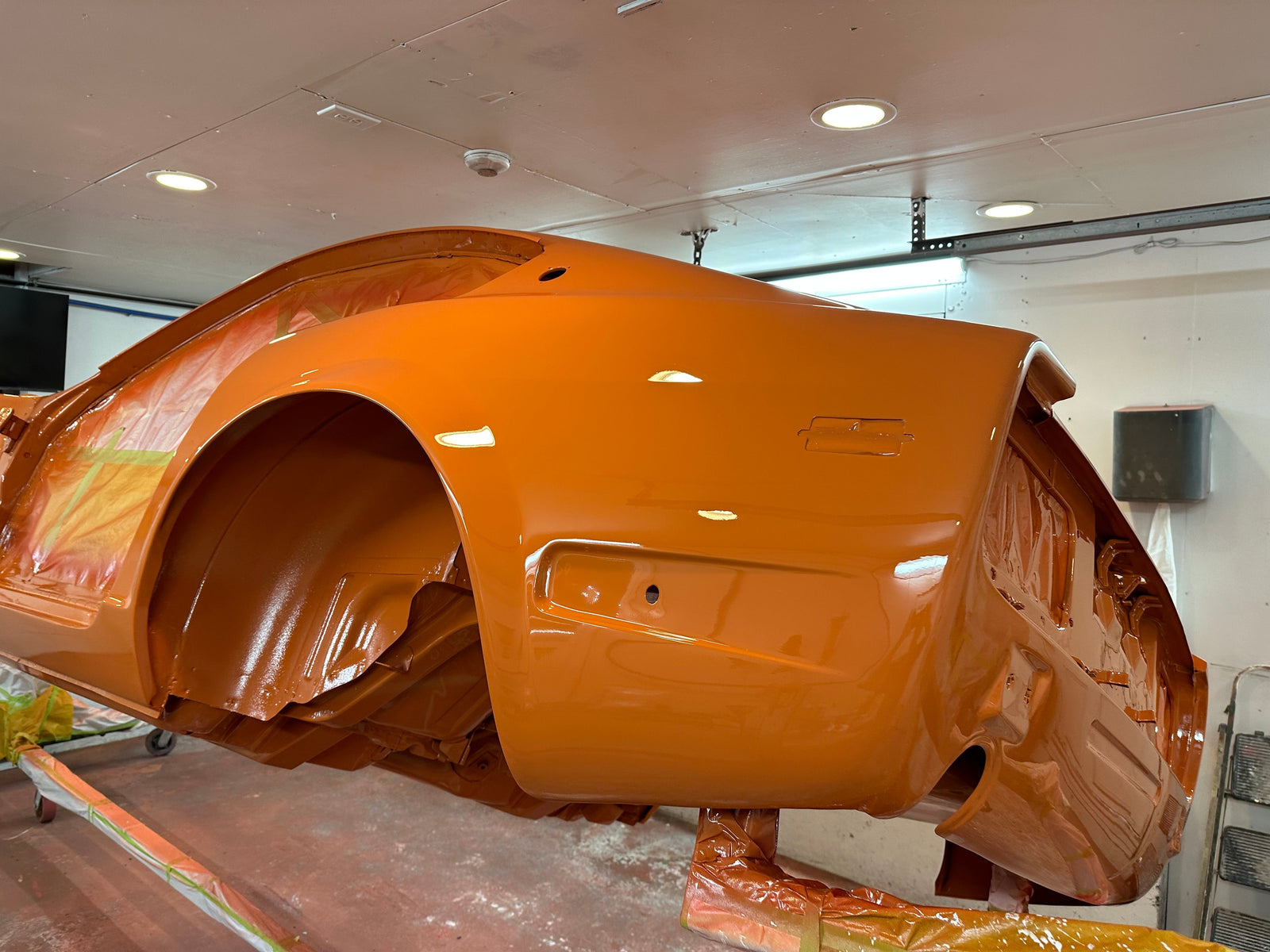Your Cart is Empty

October 02, 2025 3 min read
Most people who paint cars stop after laying down base and clear, then cut and buff. That works fine — but if you want a finish that looks deep enough to dive into, flow coating is the next level.
I posted a video on this process recently, and the response was huge. A lot of folks hadn’t even heard of flow coating, and the ones who had weren’t sure when or why to use it. So let’s break it down.
Flow coating is the process of re-clearing a paint job after it’s been sanded flat.
Think of it like this: your first coats of clear lock in the paint, but they’re not always glass-flat. By blocking those layers smooth and then laying down a fresh coat of reduced clear, you bury the surface and get a finish with crazy depth and gloss.
It’s not just “extra clear” — it’s a specific technique to level out the surface and make the finish pop.
Show cars – If you’re building something that’s going to be judged or photographed up close, this is how you get that mile-deep reflection.
Heavy metallics or candy paint – Flow coating buries metallic flake or candy transitions so they look seamless.
Custom restorations – When you’ve invested months into a project, this final step sets it apart.
For a driver-quality paint job? Not necessary. But for a build you’re proud to show off, it’s worth the time and materials.
Here’s the process in broad strokes:
Spray your base and clear as usual.
Let the clear cure completely (follow manufacturer specs).
Block sand the surface flat — usually starting around 800–1000 grit.
Mix and spray reduced clear (flowed on thinner to lay out smooth).
Let cure again.
Final cut and buff.
Done right, you’ll have a finish that’s slicker and deeper than standard clear alone.
Pros:
Deeper gloss and depth.
Levels out imperfections.
Professional, show-quality results.
Cons:
More time and labor.
Extra materials cost.
If you rush it, you risk solvent pop or shrinkage.
Here are some solid picks if you want to try flow coating (affiliate links):
Sanding Supplies: LANHU 9 x 11 Inch Wet/Dry Sandpaper Assortment 800 to 2000 Grit, 36 Sheets
Spray Gun (Pro): DeVilbiss FLG-5 FinishLine Gravity HVLP Spray Gun
Buffing Pads & Compounds: 3M Perfect-It EX Machine Polish & Foam Pads Kit
I break down flow coating in this video — and you can see why it’s worth the effort.
Flow coating isn’t something you have to do on every job. But when you want a finish that stands out from the crowd, this is the trick that takes it from nice paint to jaw-dropping show car.
I’ll be using this technique on my current C10 build, and sharing more paint and autobody tips along the way.
Want more pro autobody tricks and restoration tips? Follow along at VtwinsToV8s.com and check out my Amazon tool list.
Comments will be approved before showing up.